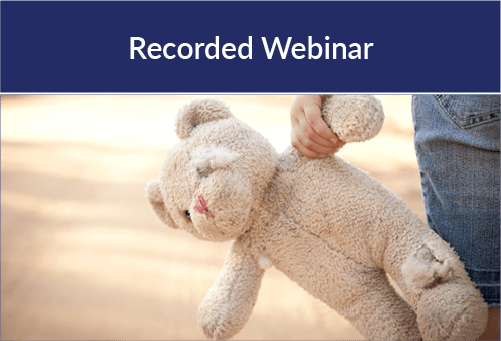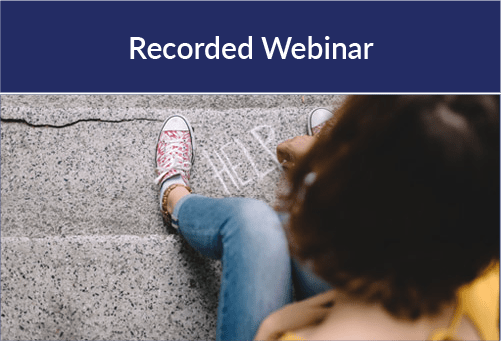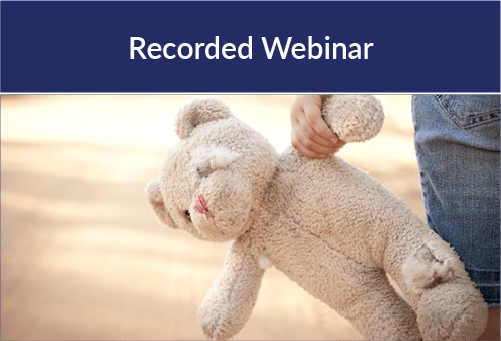


Join other child-serving professionals to create a plan of action for preventing child sexual abuse of youth in your care. Learn the signs and symptoms of child sexual abuse, mandated reporter and stakeholder responsibilities. Identify strengths and weaknesses of current prevention practices, and develop an action plan, using the Strategic Prevention Dashboard, for your organization. This course is open to all members of child serving organizations such as preschool, after-school care, summer camps, church groups, athletic associations or others responsible for the care of minors.

Learn the signs of neglect, physical and sexual child abuse in an effort to gain a better understanding of how to identify victims. KNOW & TELL is a public responsibility movement, to educate all adults to KNOW the signs of abuse and TELL responsible authorities when they recognize them. Awareness of these signs is a critical step to protecting our children and helping to educate others. We all have a responsibility to protect children. THIS TRAINING IS NO LONGER AVAILABLE THROUGH NCJTC. PLEASE VISIT THE REGISTER BUTTON OR THE LINK IN THE ABOUT SECTION.

Examine the common medical and social myths and misconceptions that undermine the investigation and adjudication of child sexual abuse cases. Materials discussed will include the medical/legal definitions or "child", the evolving definition of "rape", and the different between statutory requirements for "consent" and "force".

Review a case study involving a 3-year old child who was physically and emotionally abused by his mother's boyfriend. It was not until he was unable to walk that his mother was forced to take him to the Emergency Department for medical attention. With the work of many dedicated people of multi-disciplines this case was brought to justice!

Delays in disclosure can present far-reaching challenges that impact the investigations and successful prosecution of child predators. Learn the ways in which the forensic interview can be used to maximize information and disclosure context from youth who have delayed waiting to tell.

What do we really know about the dynamics of commercial sexual exploitation of children (CSEC) when a caregiver or family member is directly selling sex with their child for profit? This webinar will explore the commonalities found in victims of family-facilitated CSEC compared to third-party CSEC. The presenter will delve into the identity and modus operandi of familial traffickers, and examine the challenges of family-facilitated CSEC victim identification and long-term outcomes.

Discuss the various dynamics of asphyxiation abuse in children and identify commonly missed opportunities for evidence-gathering. Attendees will be taught the basics of anatomy, discuss the various forms of asphyxiation and highlight the signs and symptoms that may be present after this type of attack. All members of the multidisciplinary team including law enforcement, CPS, forensic interviewers, medical providers and prosecutors will learn the tools to assess and interview children who have been asphyxiated. With proper training and protocol, practitioners have started to better identify this often missed and sometimes lethal crime, finally giving this crime and the victims a voice.

Discuss the various dynamics of asphyxiation abuse in children and identify commonly missed opportunities for evidence-gathering. Attendees will be taught the basics of anatomy, discuss the various forms of asphyxiation and highlight the signs and symptoms that may be present after this type of attack. All members of the multidisciplinary team including law enforcement, CPS, forensic interviewers, medical providers and prosecutors will learn the tools to assess and interview children who have been asphyxiated. With proper training and protocol, practitioners have started to better identify this often missed and sometimes lethal crime, finally giving this crime and the victims a voice.

This webinar delves into the dual reality faced by many youths in the juvenile justice system who are not only involved in offending behaviors but are also victims of commercial sexual exploitation of children (CSEC). Participants will gain a deeper understanding of the intertwined nature of offending and victimization, the critical role of a trauma-informed lens, and practical strategies for identifying CSEC indicators. Examine how comprehensive wrap-around services and the power of lived experience mentorship can break the cycle and support healing.

Learn the best approach with children who are alleged victims of child abuse in the initial phases of a case, after a concern has been identified. Develop the basic skills and techniques necessary to engage a child in such a way as to minimize suggestibility but still provide support, beyond what is taught in a First Responder Training. Review best practices in identification of a concern and learn to engage these children in a way that maximizes positive case outcomes and minimizes potential behaviors that can hurt cases.
